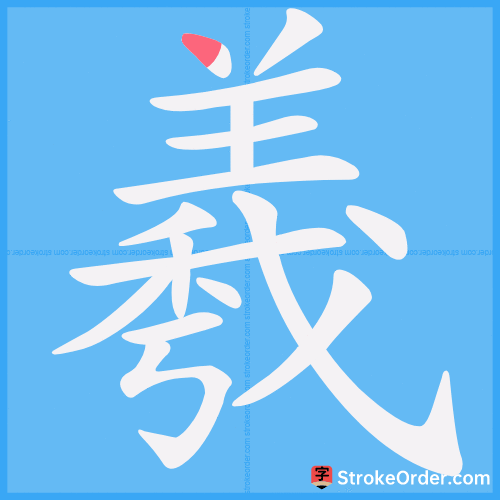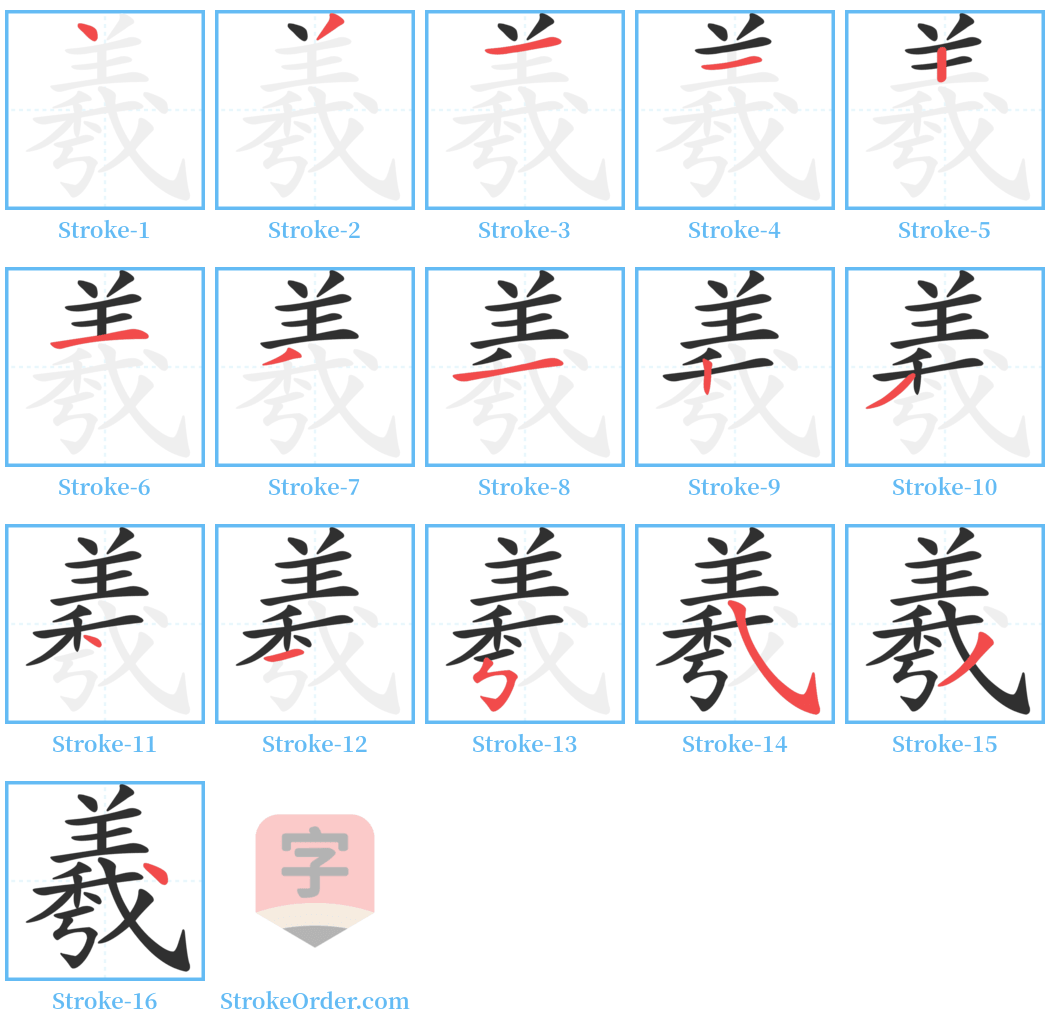羲 Stroke Order
Animated Stroke Order of 羲

Stroke Order Diagrams for 羲

Step-by-Step Handwriting Guide for 羲

Learn to Write Chinese Characters with Video Tutorials
Watch the video of writing the Chinese character "羲", learn the correct stroke order (笔顺) of the character "羲", and master the standard way of writing the character "羲".
Free Printable Handwriting Practice with Stroke Order: 羲
Printable Writing Practice Worksheet of "羲" in Portrait Orientation (Tian Zi Ge)

Printable Writing Practice Worksheet of "羲" in Landscape Orientation (Tian Zi Ge)

Information of 羲
Pinyin
xī
Radical
羊
Strokes
16 strokes
Usage
★★★★
Definition
(surname) / name of an emperor
羲:
1. (Fu Xi) The ancestor of humanity in Chinese mythology, often mentioned alongside "Nu Wa" and "Shen Nong" as one of the Three Sovereigns of ancient times. Abbreviated as "Xi," as in "Xi Huang" (伏羲皇), "Xi Yan" (伏羲炎) — Fu Xi and Yan Di (Shen Nong), "Xi Xuan" (伏羲轩) — Fu Xi and Xuanyuan, "Xi Huang" (伏羲黄) — Fu Xi and Huangdi, and "Xi Jing" (伏羲经) — referring to the "I Ching" (易经), which was said to have been created by Fu Xi.
2. (Xi and He)
a. "Xi Shi" and "He Shi," officials in legend responsible for astronomy and calendars;
b. A deity in mythology who drives the chariot of the sun;
c. The mother of the sun in mythology;
d. An official title established during the Han period under Wang Mang.
3. A surname.
4. (name) The character originally represents "gas" (气).
5. Used as a proper noun, referring to the ancient emperor Fu Xi in legend.
6. Abbreviation for the officials "Xi Shi" (羲仲 and 羲叔) who managed astronomy during the time of Yao.
7. Originally refers to the sun deity "Xi He," now used to denote the sun.
8. Can refer to the sun indirectly or to time in general (e.g., "Xi Tian" referring to the sun, "Xi E" referring to the combined deities of Xi He and the moon goddess Chang E).
9. An ancient surname.
10. As an adjective, "tired" or "weak," as in "Xi Lao" (羲老) meaning aging and frail, and "Xi Ji" (羲疾) referring to a condition caused by excessive fatigue.
Input Method for 羲
Pinyin
xi1
Wubi
ugtt|ugty
Cangjie
tghds
Zhengma
uczh
Four Corner
80253
Unicode
U+7fb2
Same Pronunciation Characters